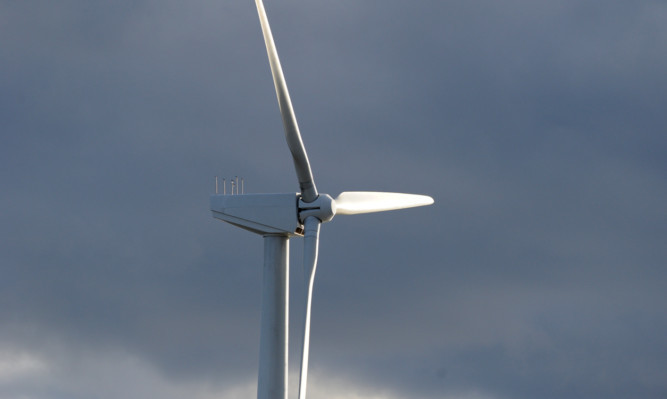A Cupar environmental group has called on the “voice of the vast majority of people who want wind energy” to be heard as debate rages over windfarm applications in Fife.
The comment has been made by Andrew Collins, of Sustainable Cupar’s Energy Group, just days after a YouGov poll suggested that at least three in five people would support large windfarms in their communities.
Fife Council is in the midst of a review and public consultation of onshore wind energy policies. It has also announced bold plans to capitalise on generous renewable subsidies to generate £8.6 million by putting small scale turbines on around 50 council buildings.
However, there have also been a number of other larger scale applications around Fife that have attracted controversy with well organised opposition.
Mr Collins said: “We have a problem in Fife. We are in danger of getting a number of commercial windfarm developments that throw a few crumbs to local communities plus a hotchpotch of small relatively unproductive turbines littering the countryside, to the financial benefit of only a few.
“For those who want wind energy to contribute effectively to sustainable development in Fife, and for the smaller number who are simply anti-wind, this could be one of the worst outcomes.
“Perhaps the lack of a balancing positive voice, to counter negative briefings of the anti-wind groups, has contributed to this regrettable scenario. Sustainable Cupar believe that wind turbine revenues should be for the benefit of the local community.
“The latest Fife Council consultation needs to provide more clarity. Communities should have a map of the available wind resource to compare with the published landscape capacity map.
“Similarly, the range of the radar beam at Leuchars and implications for turbine height has been ignored. The 50m turbine height threshold, used throughout the landscape capacity assessment, is also misleading.
“Scottish Natural Heritage has stated there is no scientific basis for this threshold which is entirely arbitrary.
“No wind turbine this small is made by the mainstream manufacturers and the better, more efficient modern turbines are taller than this.
“We need to focus on the quantity of low-carbon energy Fife hopes to produce, not simply the number of windmills turning.
“There is a huge trade off between the size of wind turbines and the number required to generate the same amount of energy.
“Smaller turbines cost electricity consumers more, cause a greater ecological disturbance, and probably have a greater visual impact.
“If you reduce the height of a wind turbine or place it somewhere with less wind, then you will require many more turbines. For example you can replace at least 10, 50m turbines with a single 100m turbine to generate the same power.
“We need to find a way forward that will be better for local communities and Fife Council needs to consider the views of the people who elected it.
“It is important that the voice of the vast majority of people who want wind energy, but want it done properly, is heard.”
Bill Lindsay, development plan service manager with Fife Council, said: “Fife Council’s recent consultation on the Main Issues Report for the new FIFEplan Local Development Plan attracted 1,700 representations from 530 respondents.
“The predominant theme in these comments and in discussions at the various drop-in events has related to wind turbines and the review of the onshore wind energy policy.
“This is reflected in the level of responses we received in the consultation: almost 90 comments were submitted.
“The issues raised by Sustainable Cupar echo some we have received in the consultation. We are currently reviewing the comments and will seek to address as part of the Fife onshore wind energy review which is currently taking place.”
